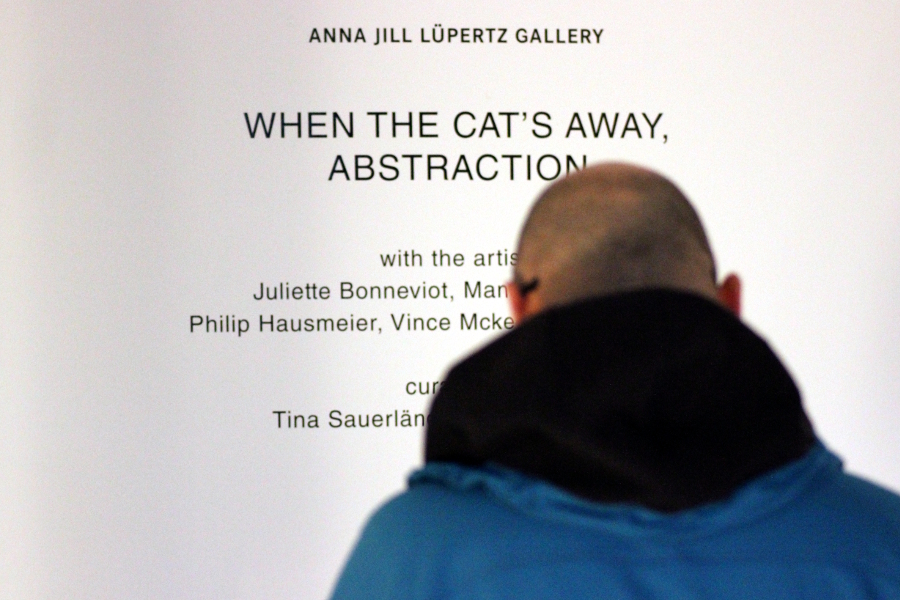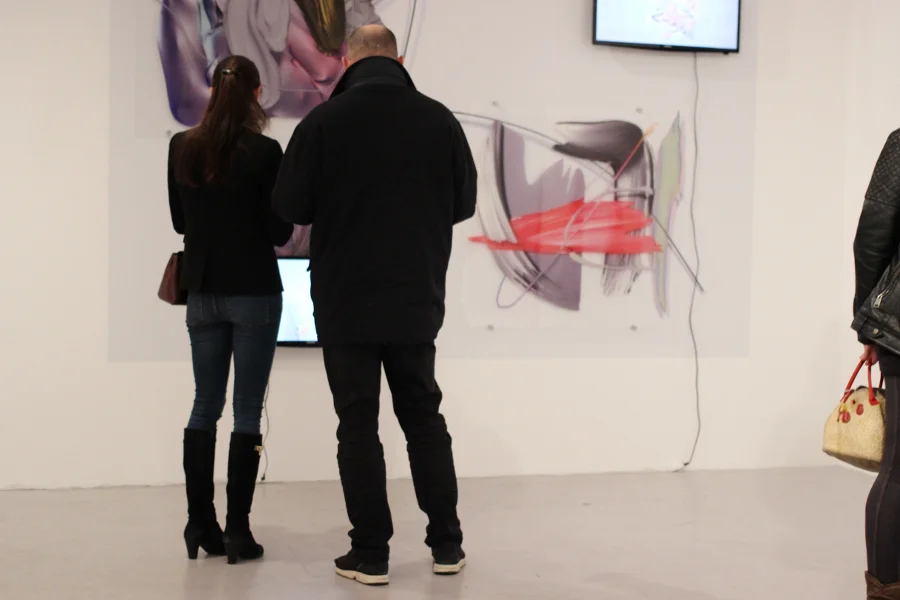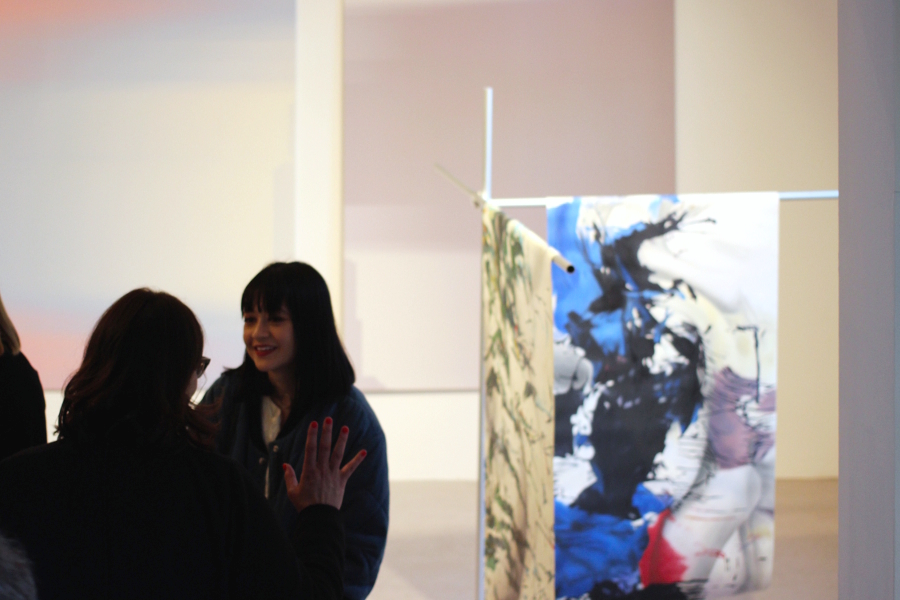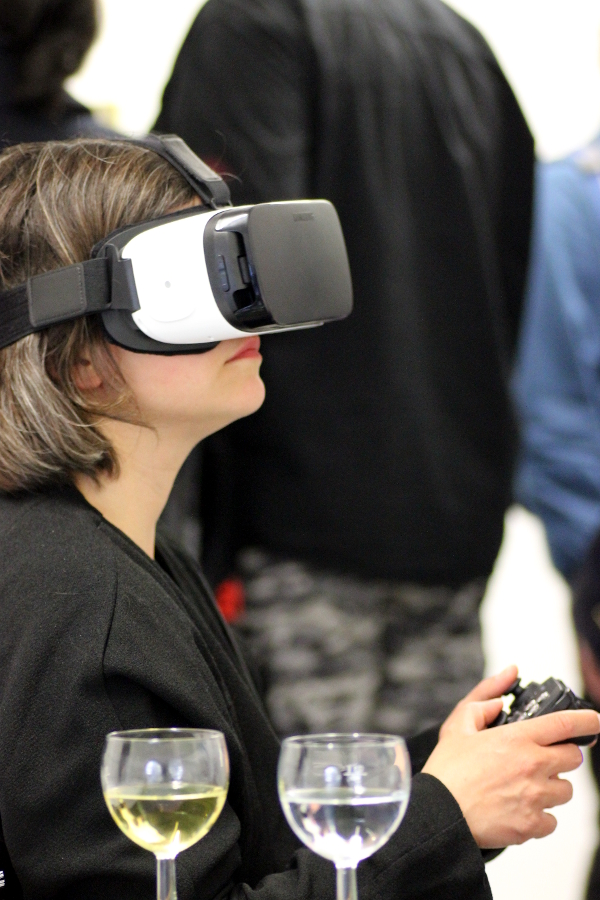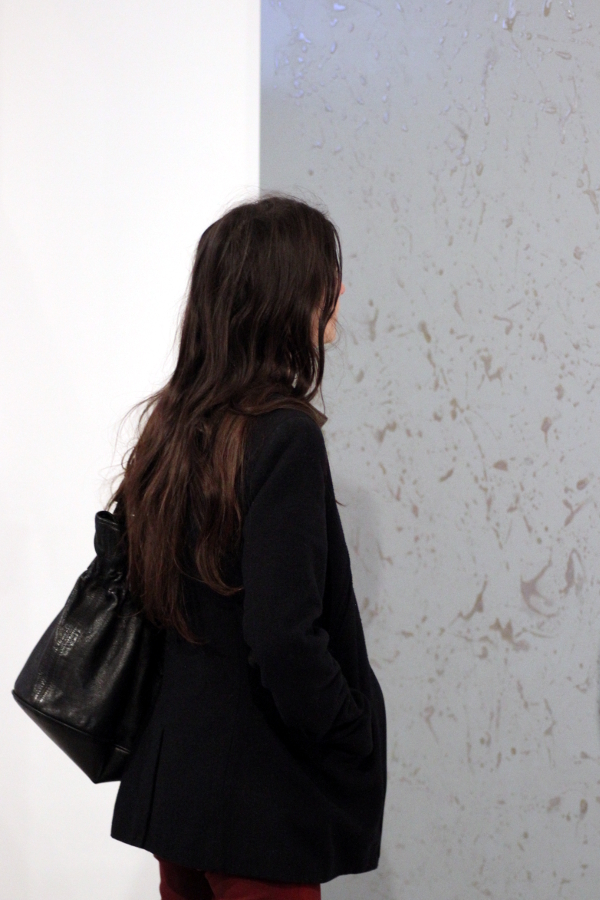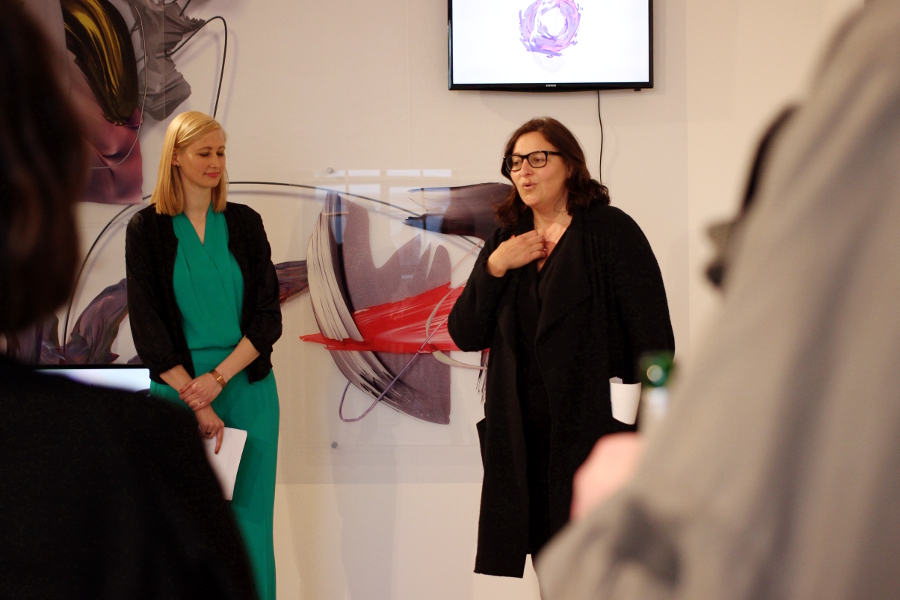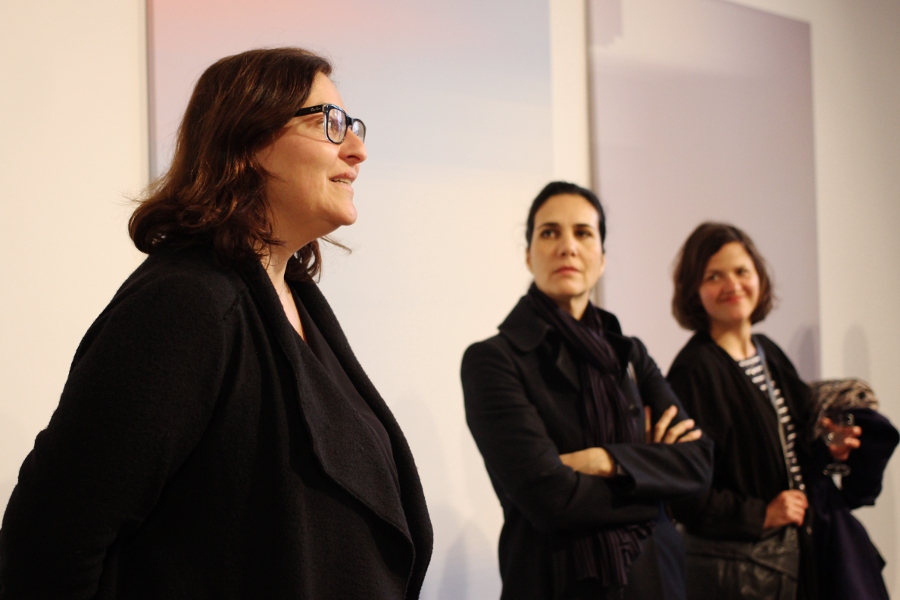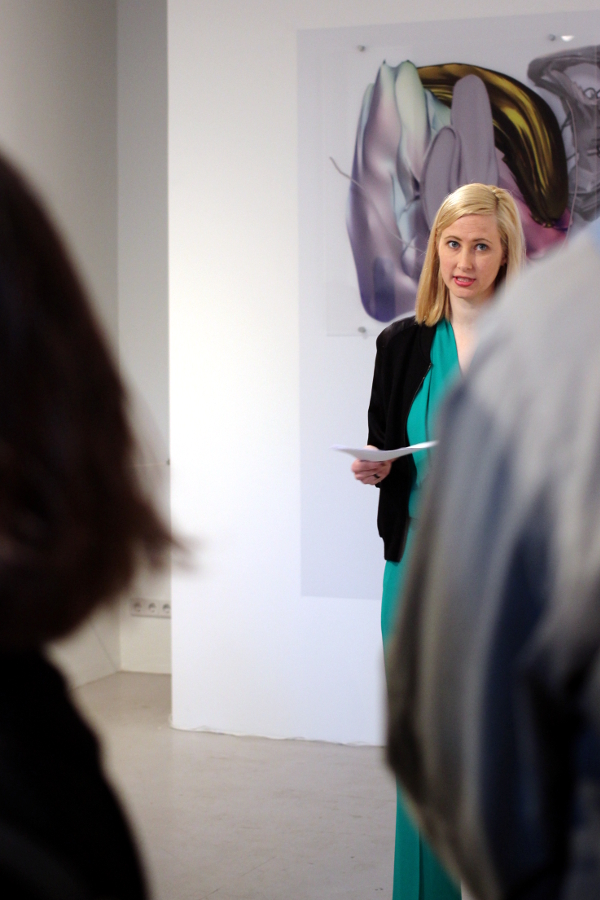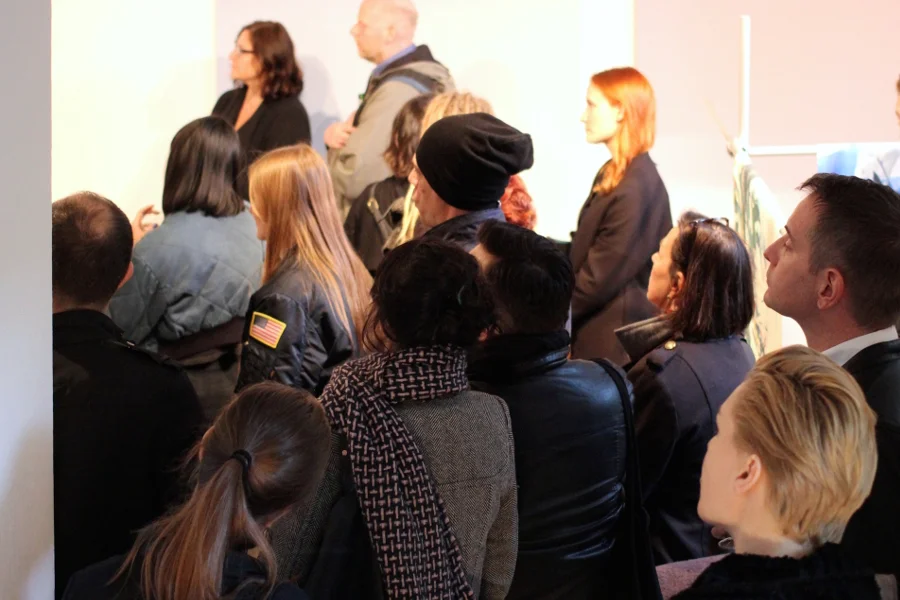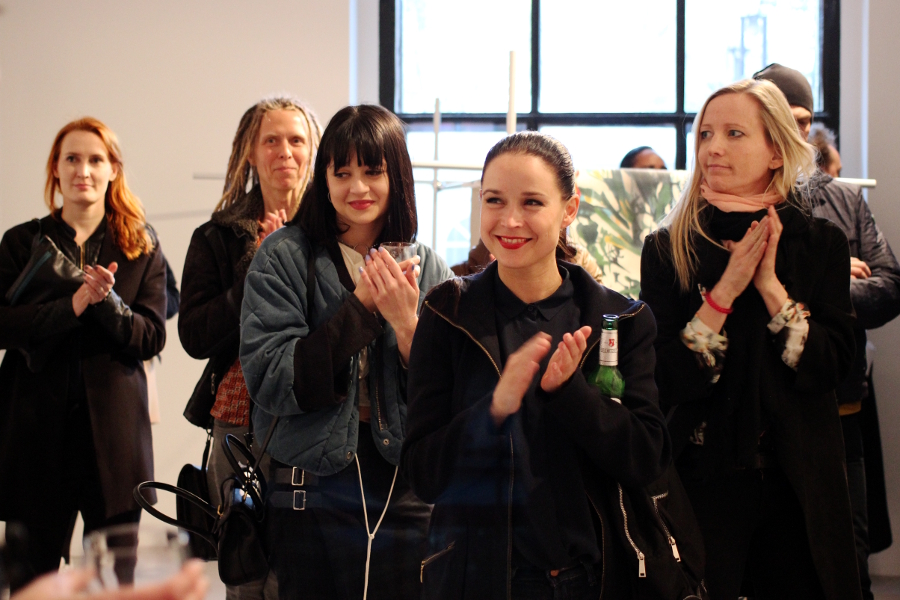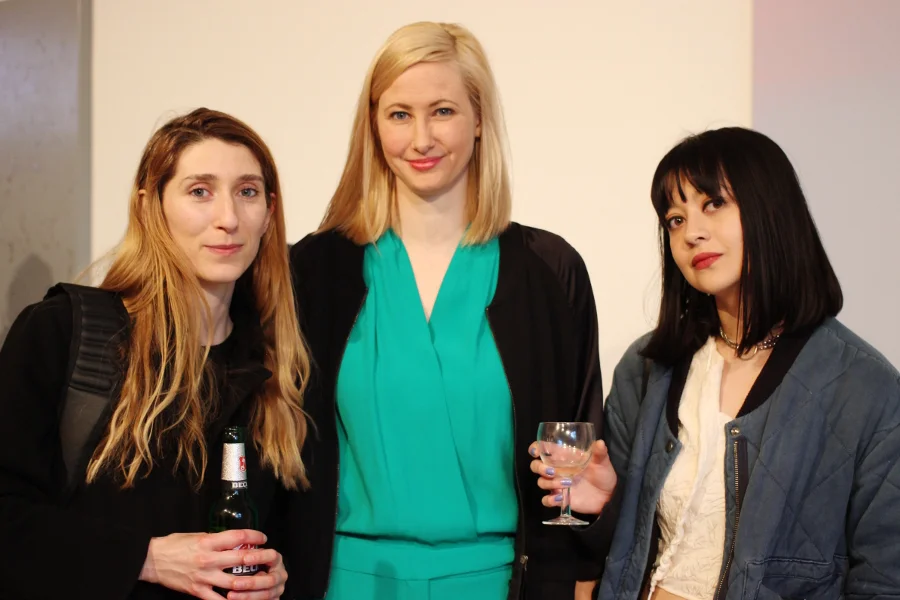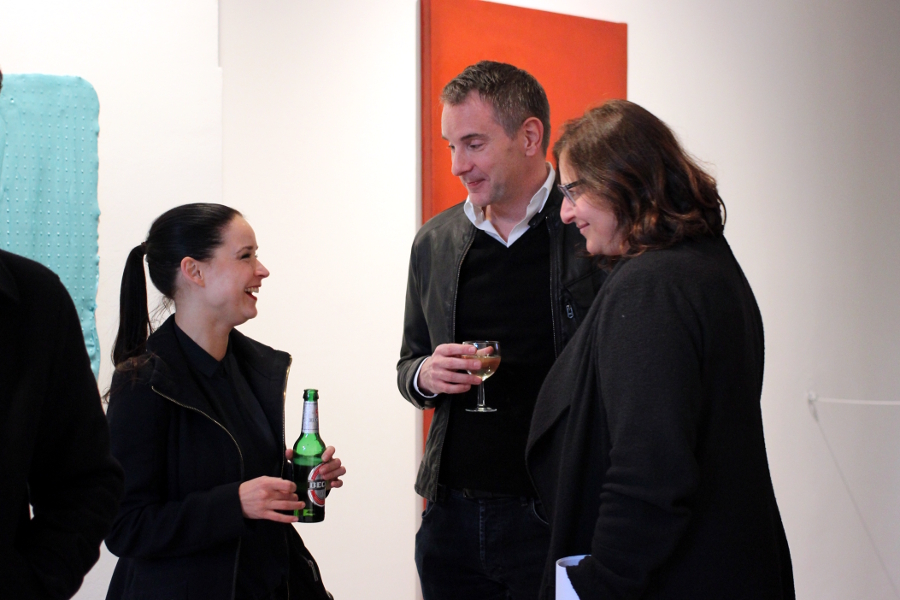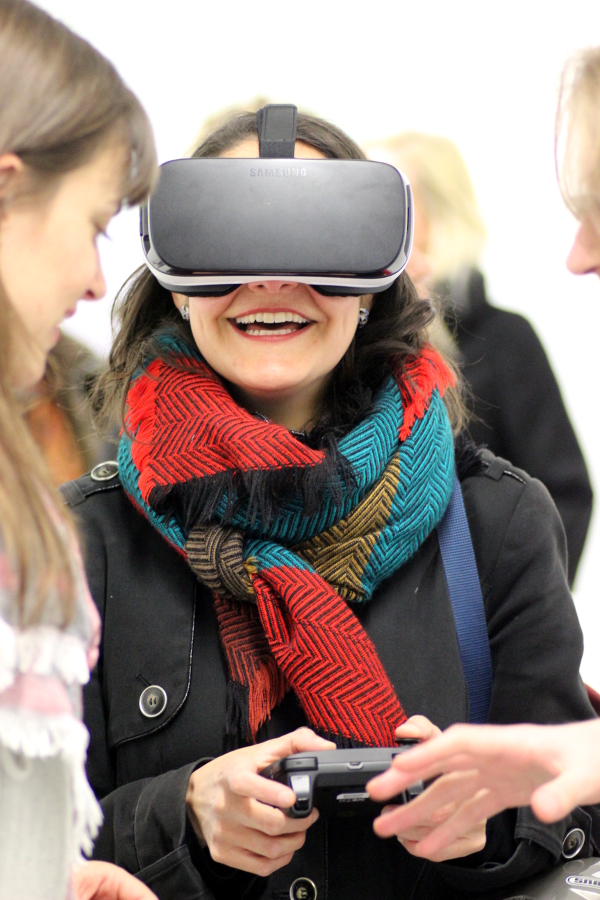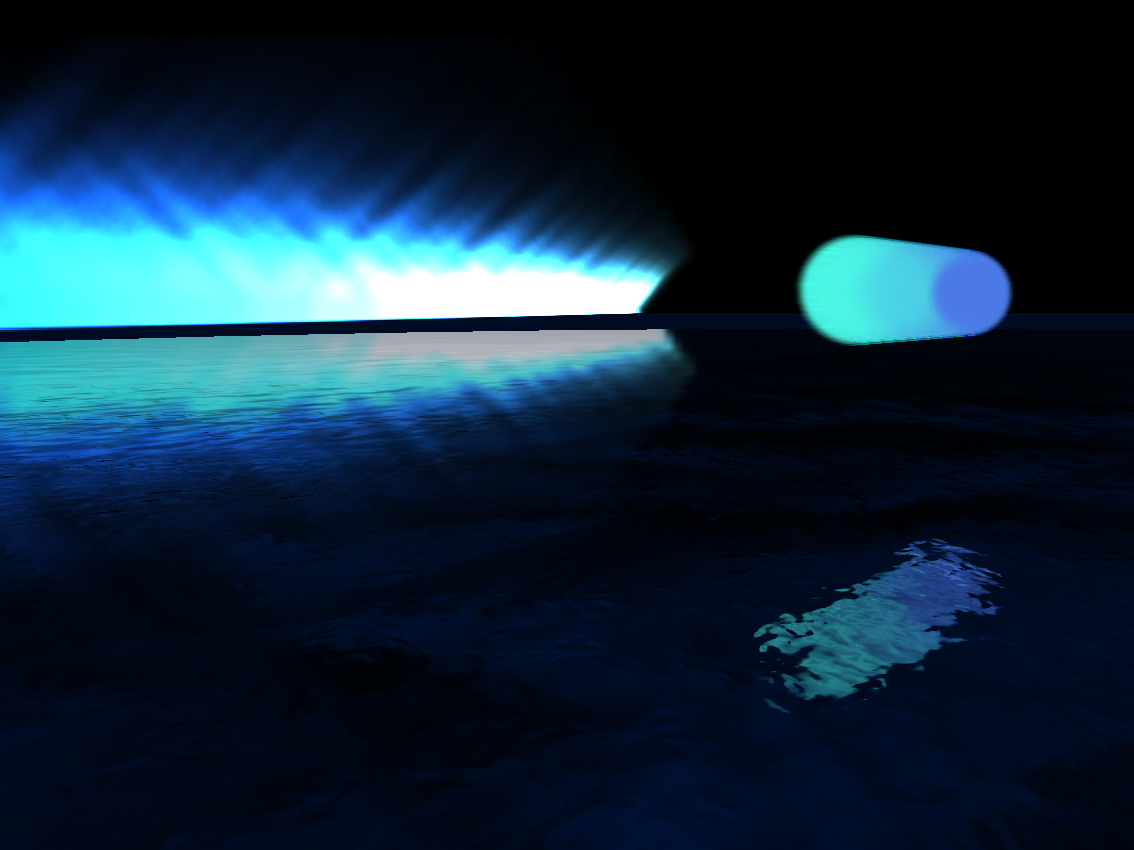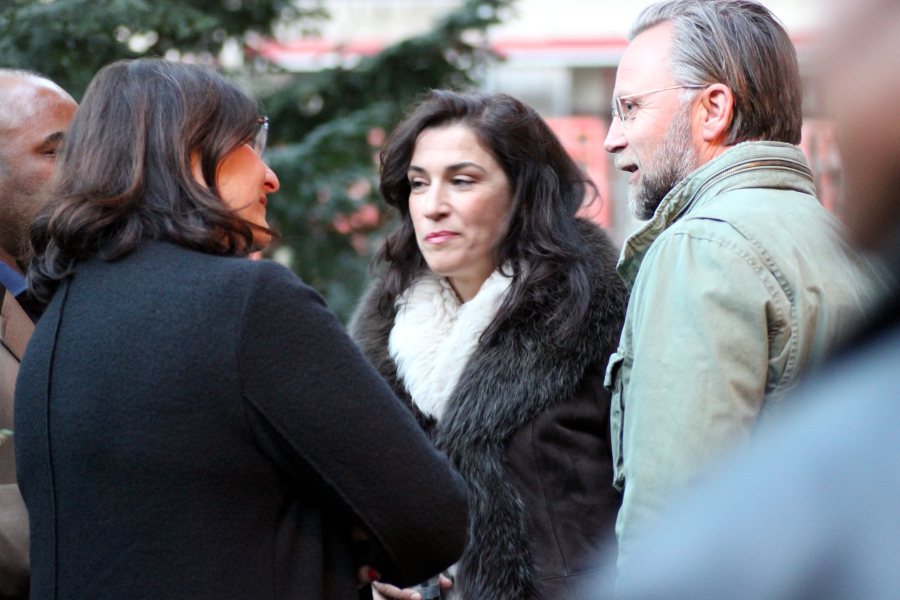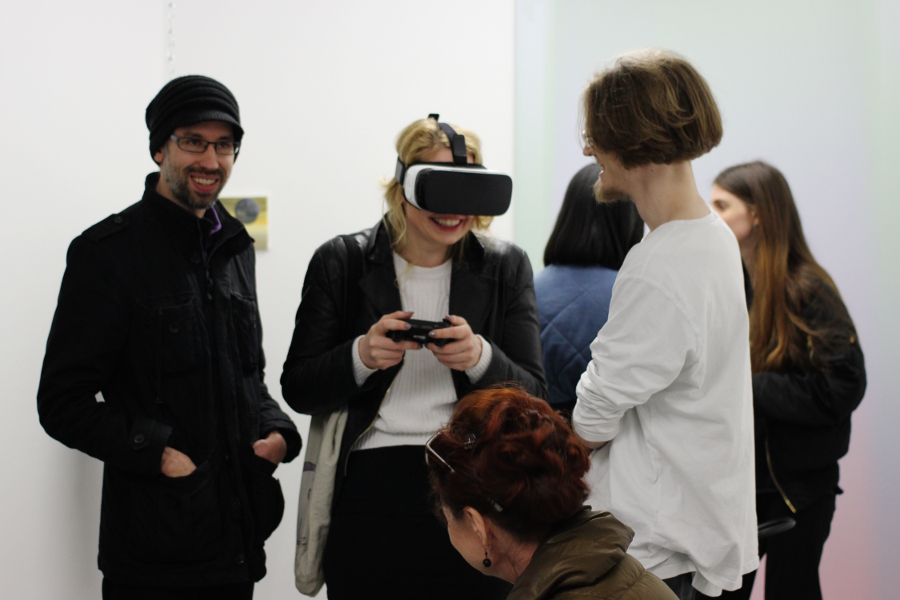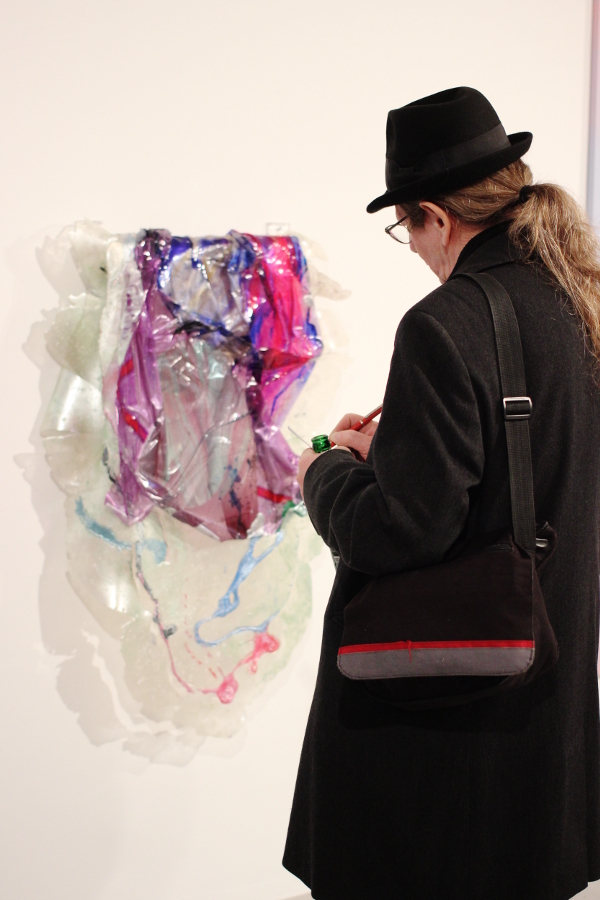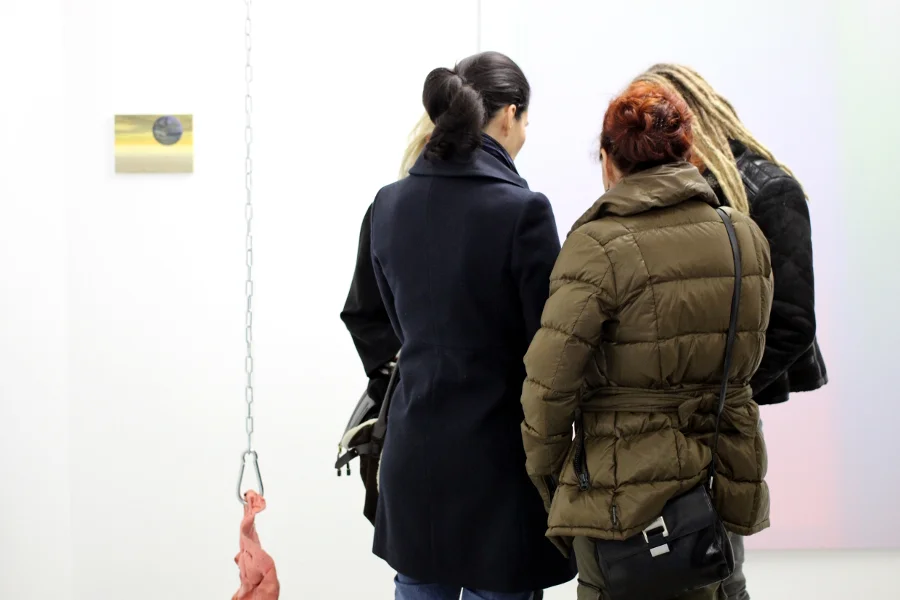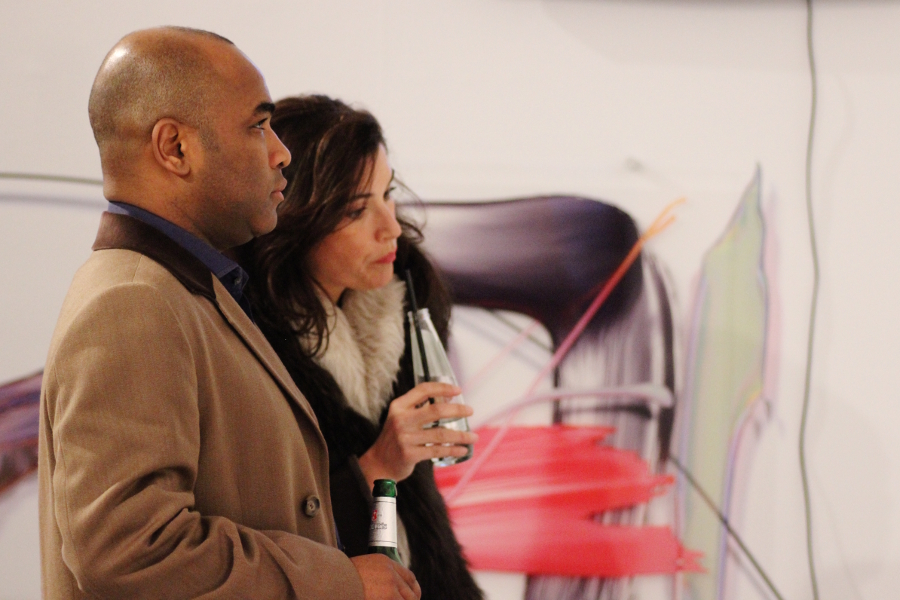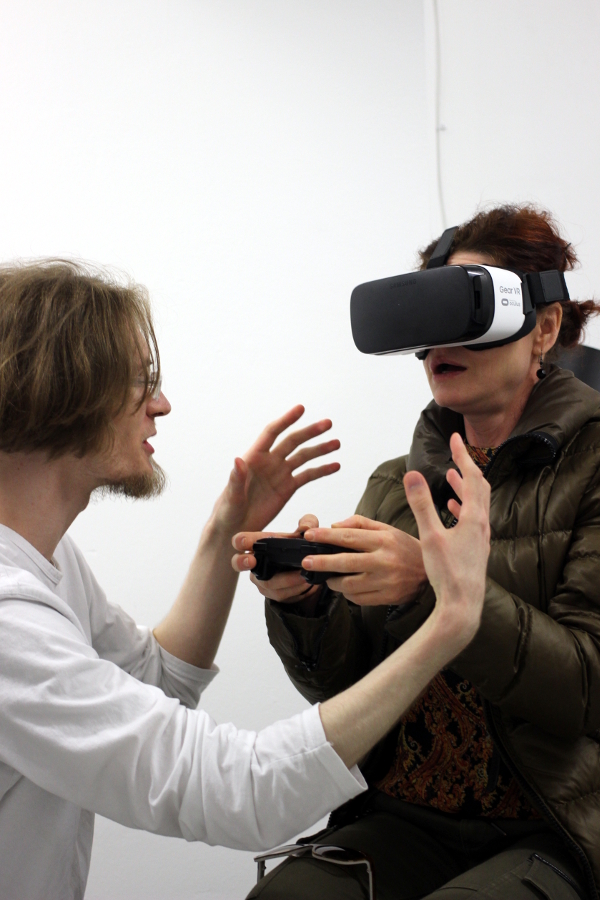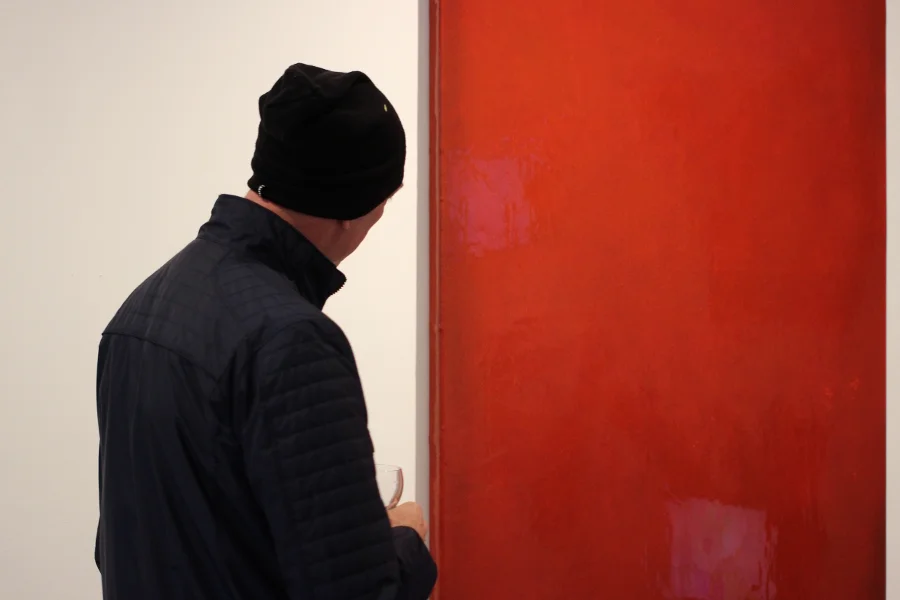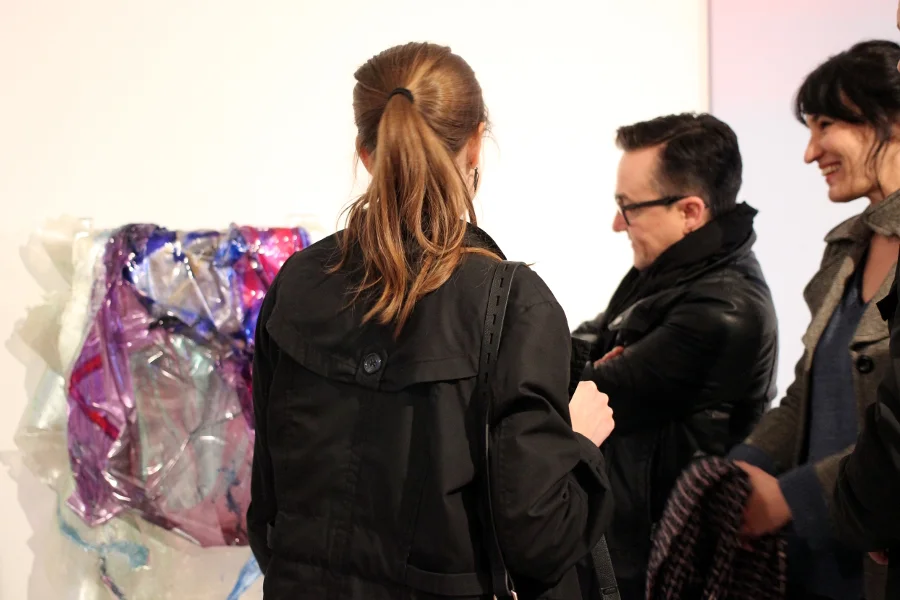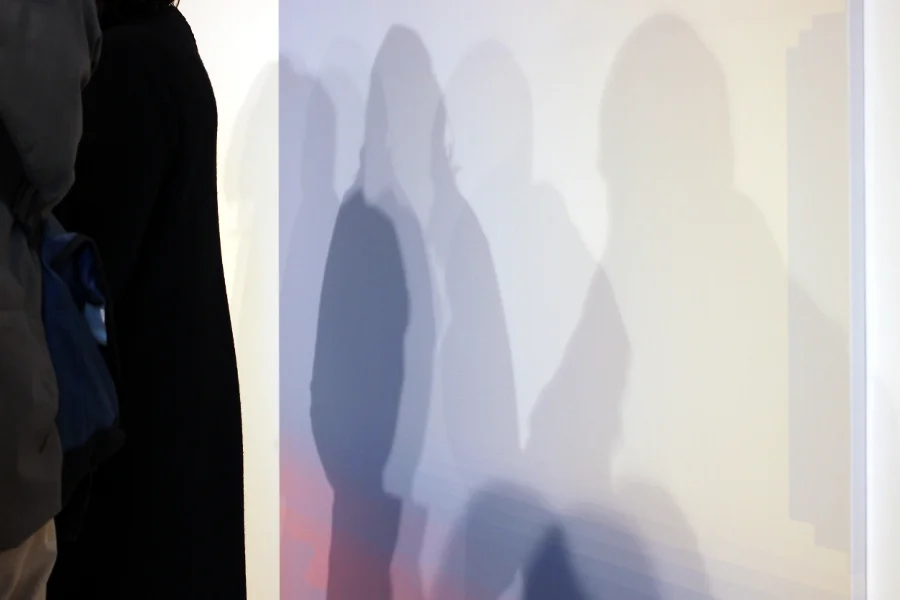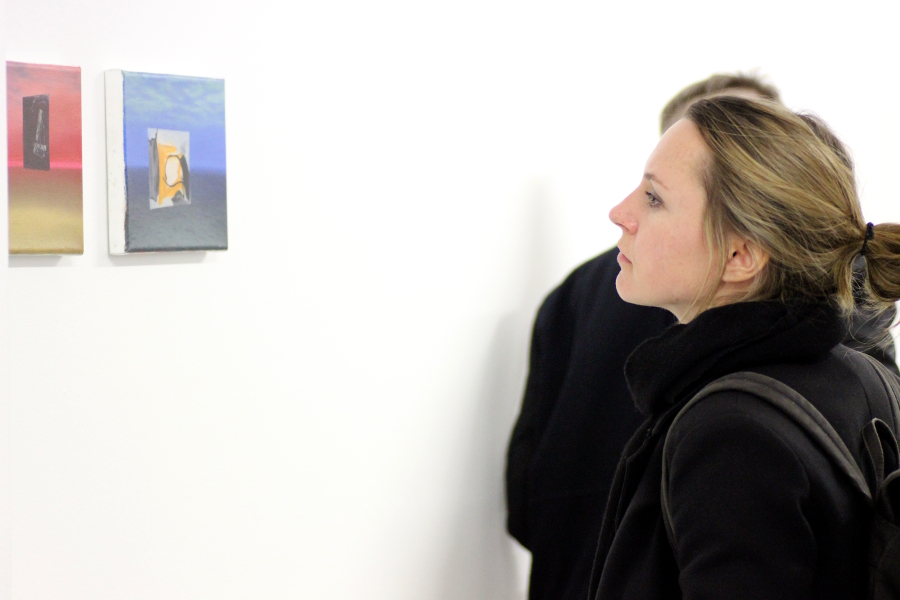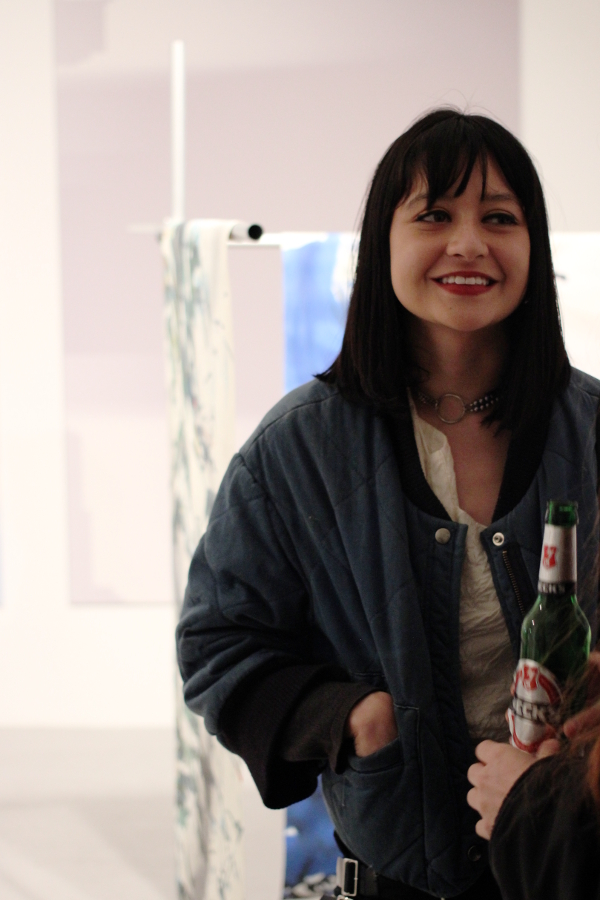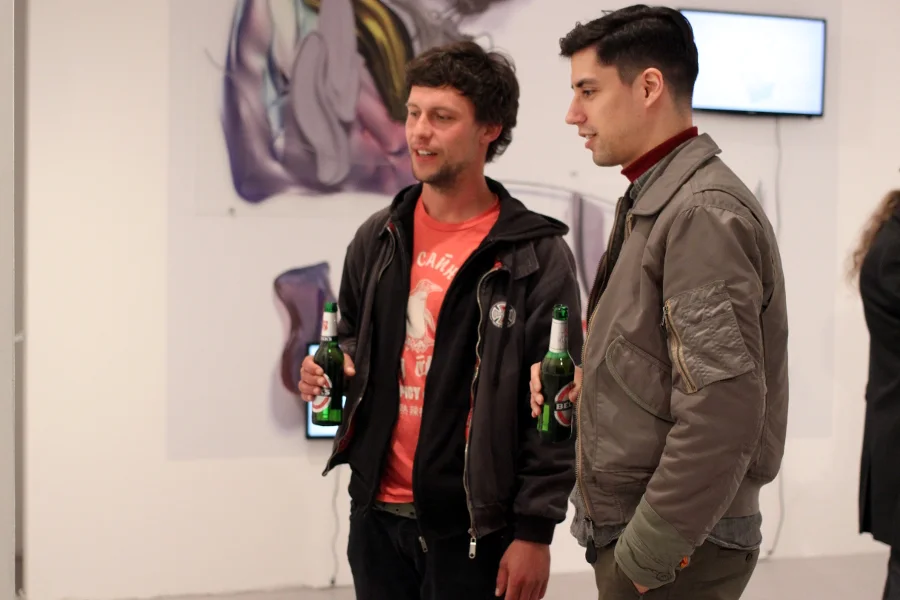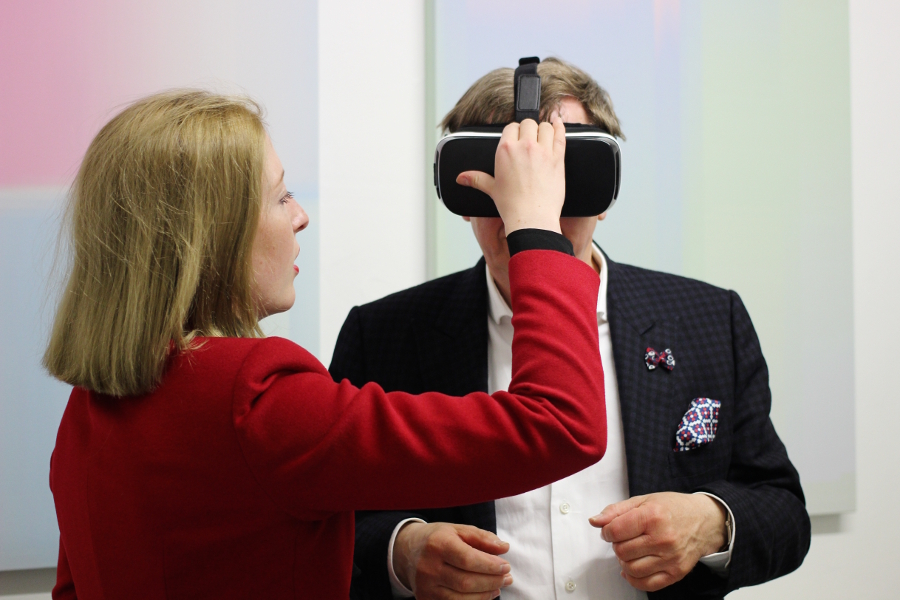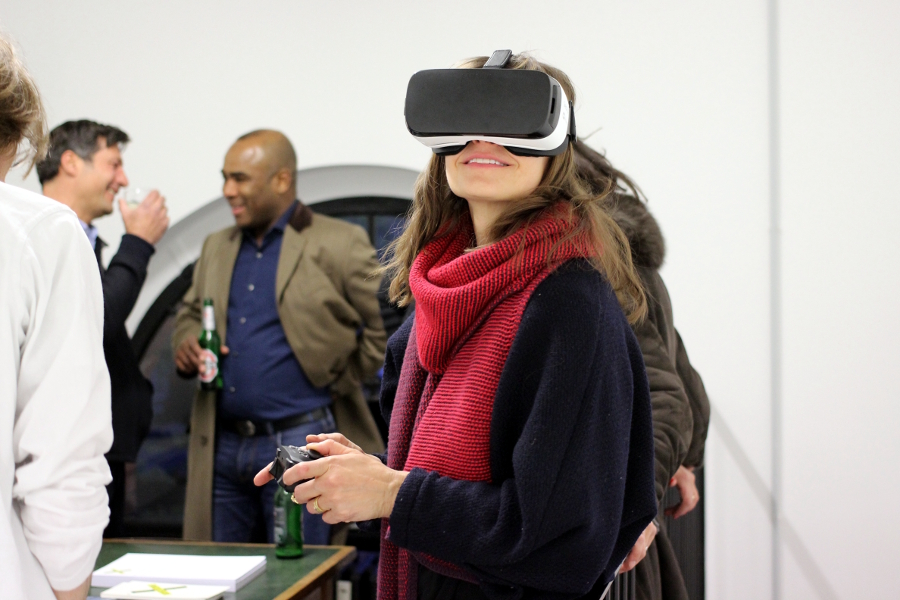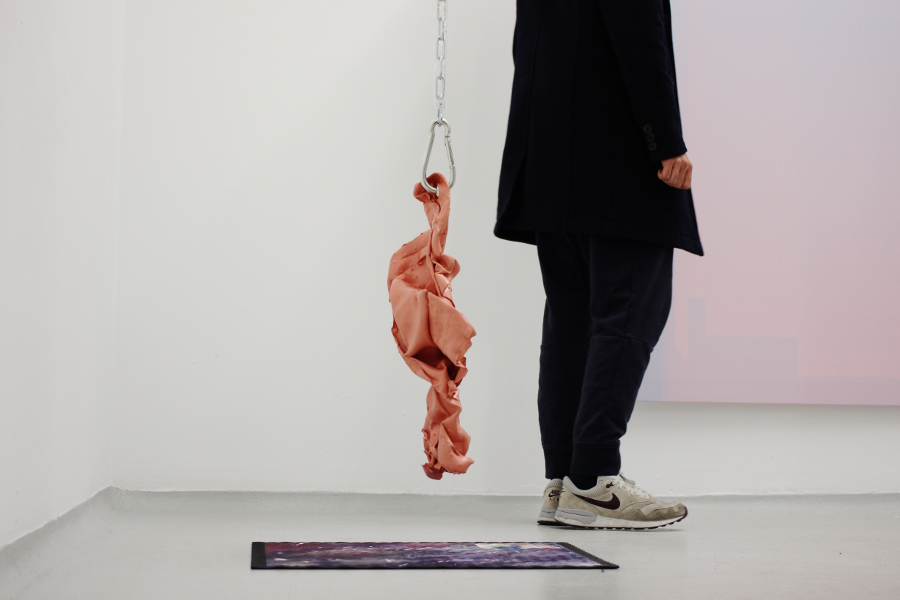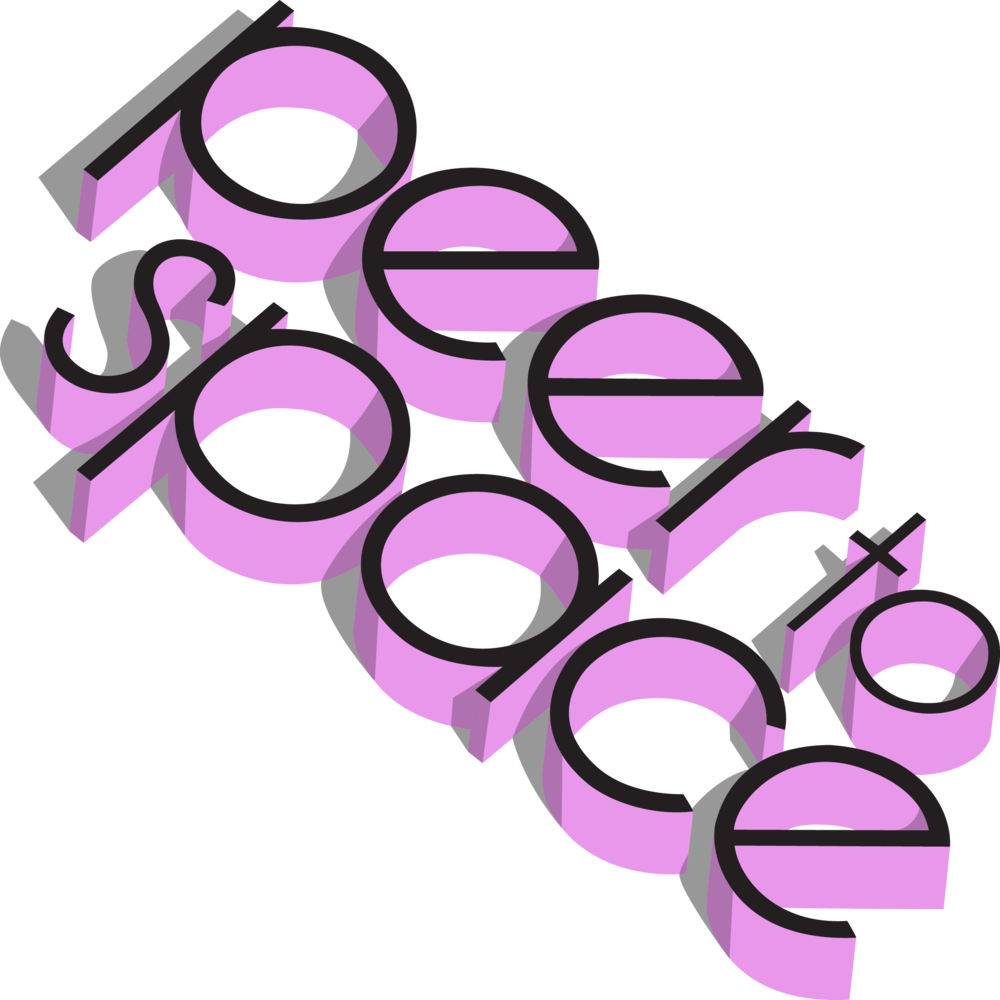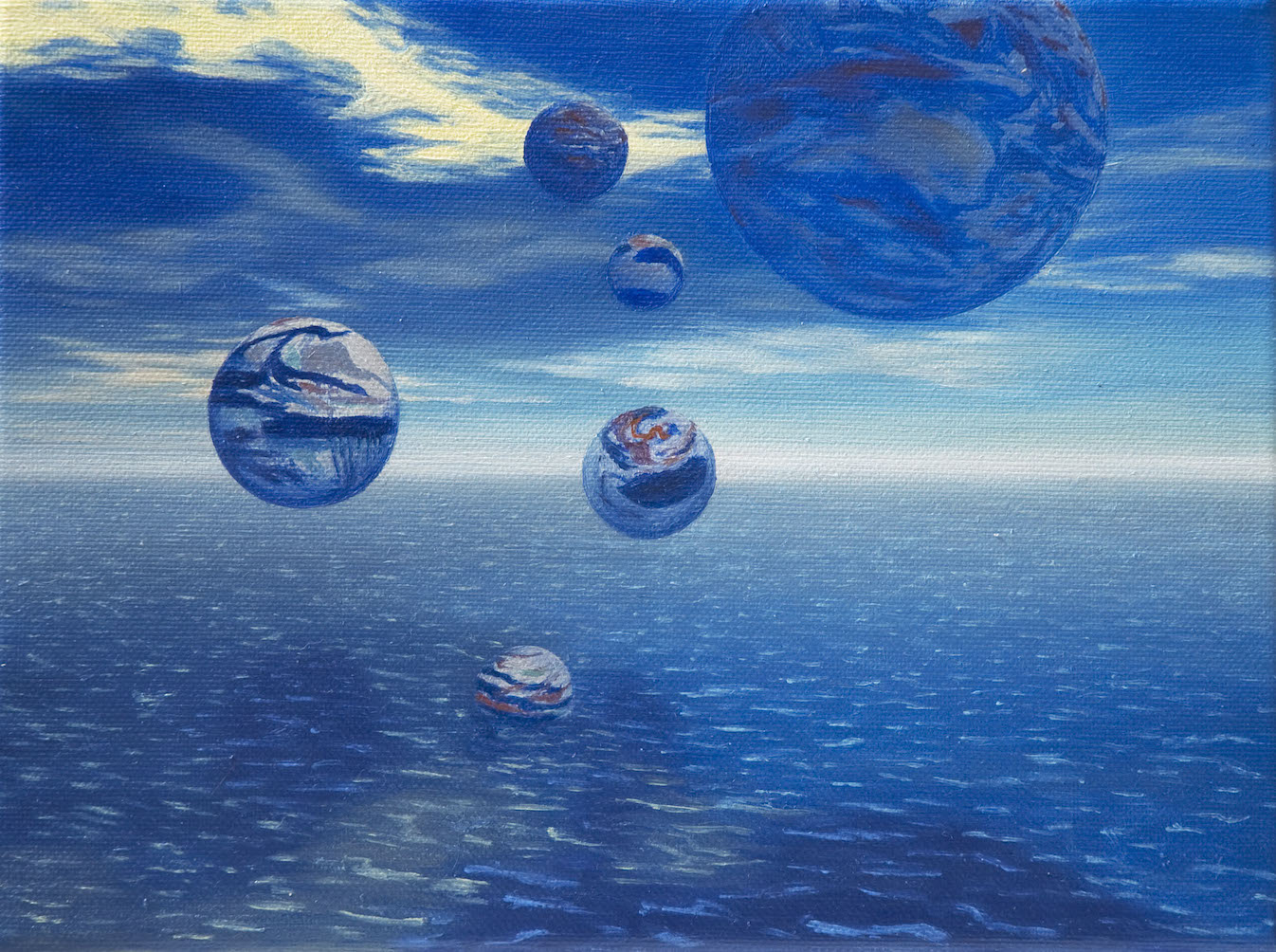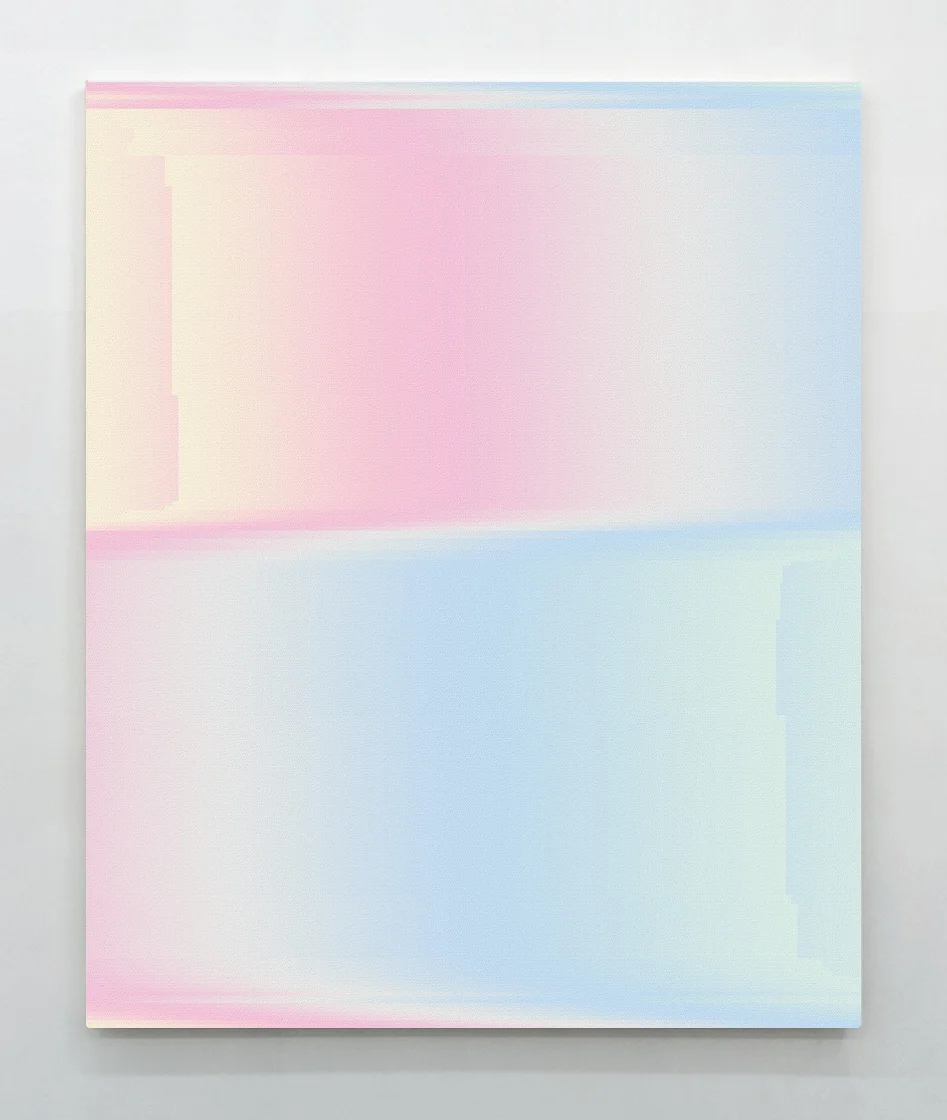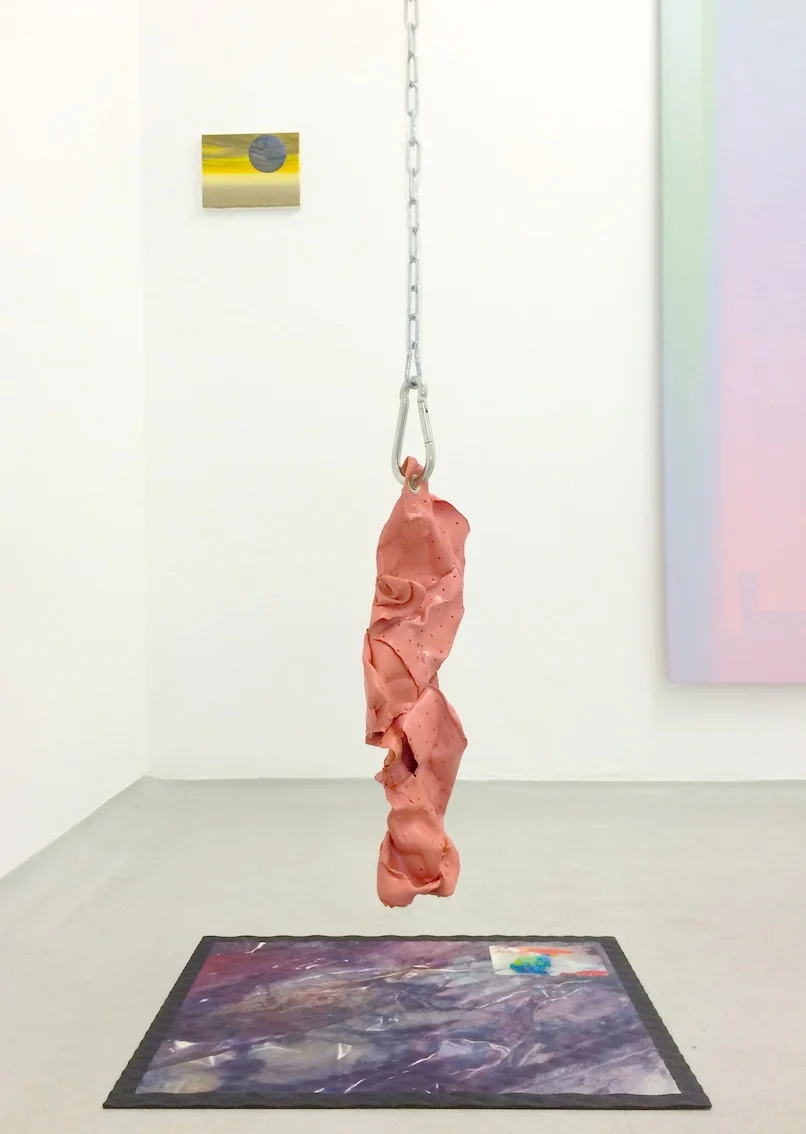Vince Mckelvie, Site Specific Augmentations, 2016, installation view
WHEN THE CAT’S AWAY, ABSTRACTION
Juliette Bonneviot, Mitchell #2, 2010, 18 x 24 cm, oil on canvas
JULIETTE BONNEVIOT (FR/DE), MANUEL FERNÁNDEZ (ES), PHILIP HAUSMEIER (DE), VINCE MCKELVIE (US), CECILIA SALAMA (UK/US)
Curated by: Tina Sauerländer
Opening: April 22, 2016, 6-10 om
Duration: April 23 – June 4, 2016
At: Anna Jill Lüpertz Gallery, Potsdamer Str. 98, Berlin
The Internet has changed our lives profoundly—we all know that. But in addition to the cat videos and selfies we share online, many artists use more abstract ways of exploring our lives between analog and digital environments by using innovative tools, materials and visual languages.
Although we experience the transient zone between the physical and virtual world every day, it is still hard to grasp. What does it actually mean to go back and forth between both of them in our lives? To examine the “fluid space” of human interaction between the physical and the virtual in everyday life, artist Cecilia Salama applies Photoshop tools to physical objects and creates 3D rubber pieces that resemble towels or prints abstract digital paintings on door mats.
Philip Hausmeier, Mental Physics, 2016, VR Experience
Every day we observe the physical and virtual merging into each other, for example when we communicate our actual identity on Facebook, whereas when we started to use the Internet some decades ago, we preferred to choose a pseudonym and create a fake character. Real and virtual layers also unite in visual images. The artist Vince Mckelvie embeds abstract animated (digital) objects in virtual real world settings and explores the transient zones of the real in physical and digital layers. Philip Hausmeier creates an abstract alternate world to traditional computer game landscapes that the user can explore via VR headsets and game controllers.
We perceive the Internet on our 2D screen surfaces. It is immaterial, yet it is real. We see it, and the conveyed information matters. Still it is hard to look behind the scenes and understand how the things we see there come into existence. The artist Manuel Fernández explores the conditions of digital image creation and abstract visual language. His BG Paintings resemble the aesthetics of algorithmically created digital art, but they are in fact “hand” painted in Photoshop. The visual surface does not necessarily reveal the method by which the works have been created.
In contrast to the immaterial nature of the Internet, artists experiment with physical materials from different (non-art) contexts. Juliette Bonneviot mixes natural and chemical substances like xenoestrogens (synthetic estrogens) that cannot be seen with the human eye but highly influence and transform the systemic body and well-being. By applying the emulsion to monumental monochrome PVC canvases, the artist underlines their power, force and impact on human life.
WHEN THE CAT’S AWAY, ABSTRACTION addresses the proceeding fusion of the real and virtual world and thereby also reveals how the aesthetics of both worlds merge. The artists in the show use abstract visual language as their tool to explore related consequences. They show how our living conditions and our perception of our surroundings changed with the Internet.
Manuel Fernandez, BG Painting 11, 2014, 81 x 100 cm
ARTIST INFORMATION
JULIETTE BONNEVIOT (*1983, lives and works in Berlin) – In her monumental monochrome PVC canvases of the series Xenoestrogens, Juliette Bonneviot investigates gender and ecology by mixing natural and chemical components like xenoestrogens (synthetic substance imitating estrogens), lead, copper, aspirin or silicone. Applied to a PVC surface, the mixed substances with huge systemic effect appear like beautiful and fragile water drops just not falling down. Juliette's website: www.juliettebonneviot.com
MANUEL FERNÁNDEZ (*1977, lives and works in Madrid) – Manuel Fernández questions abstract painting and the handling of reality in the digital and Internet age. His BG Paintings (Broken Gradients) resemble the aesthetics of algorithmically created digital art, but they are in fact “hand” painted in Photoshop. The visual surface does not necessarily reveal the way the works have been created. Thus the artist explores the consequences of today’s technologies for the perception of reality and how aesthetics evidence the process of image making in the era of digital publishing and the constant circulation of images within Internet distribution. Manuel's website: www.cargocollective.com/manuelfernandez
Cecilia Salama, the big beat, 2016, 45 x 60 cm, digitally printed rubber mat
PHILIP HAUSMEIER (*1980, lives and works in Berlin) – Mental Physics by Philip Hausmeier reveals an alternate world to conventional computer game landscapes (that imitate reality). The artist uses the same software, but builds a space with vague abstract forms the user can explore via VR headset and game controller. In his works, Hausmeier focuses on the possibilities of artistic-experimental modulation of virtual space by deconstructing the means (e.g. gaming tools) he works with. Philip's website: www.philiphausmeier.com
VINCE MCKELVIE (*1986, lives and works in Los Angeles) – Site Specific Augmentations by Vince Mckelvie is a series of abstract computer-generated images and animations embedded in reality. The different environments in which the graphical treatments are added—typically a mundane area like a street, alley or staircase—inform the aesthetic decisions for the objects added to the scene. For this installation Vince Mckelvie uses the gallery as an environment, combining several physical layers of wallpapers, works on plexi and screens and transferring his digital abstract imagery to the gallery wall. Vince's website: www.vincemckelvie.com
CECILIA SALAMA (*1990, lives and works in New York) – Cecilia Salama “photoshops” physical everyday home objects. For her latex poured rubber 3D pieces that resemble towels or rugs, she simulates the Liquefy tool in Photoshop that warps, bends or liquefies objects. The artist prints abstract paintings made on Photoshop on door mats. By applying digital tools to physical objects, the artist examines the “fluid space” of human interaction between the physical and the virtual world. Cecilia's website: www.ceciliasalama.com
REVIEWS: THE CREATOR'S PROJECT, ART F CITY
LISTINGS: BERLIN ART LINK, AQNB, ARTBERLIN, ARTFORUM
EXHIBITION VIEWS:
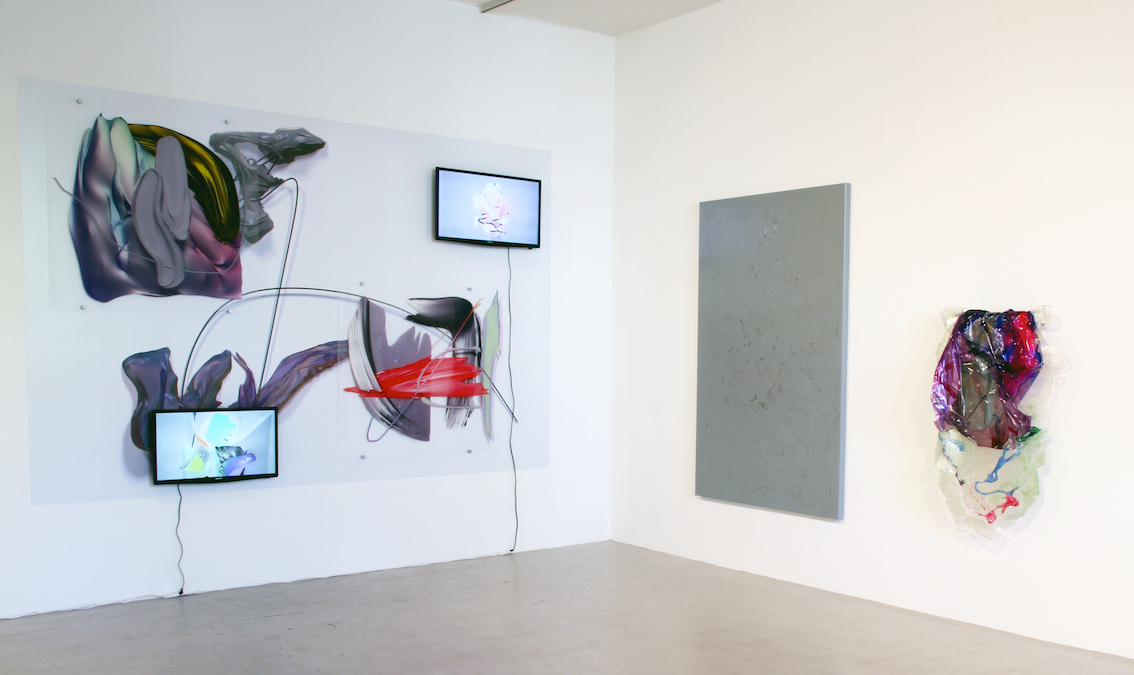
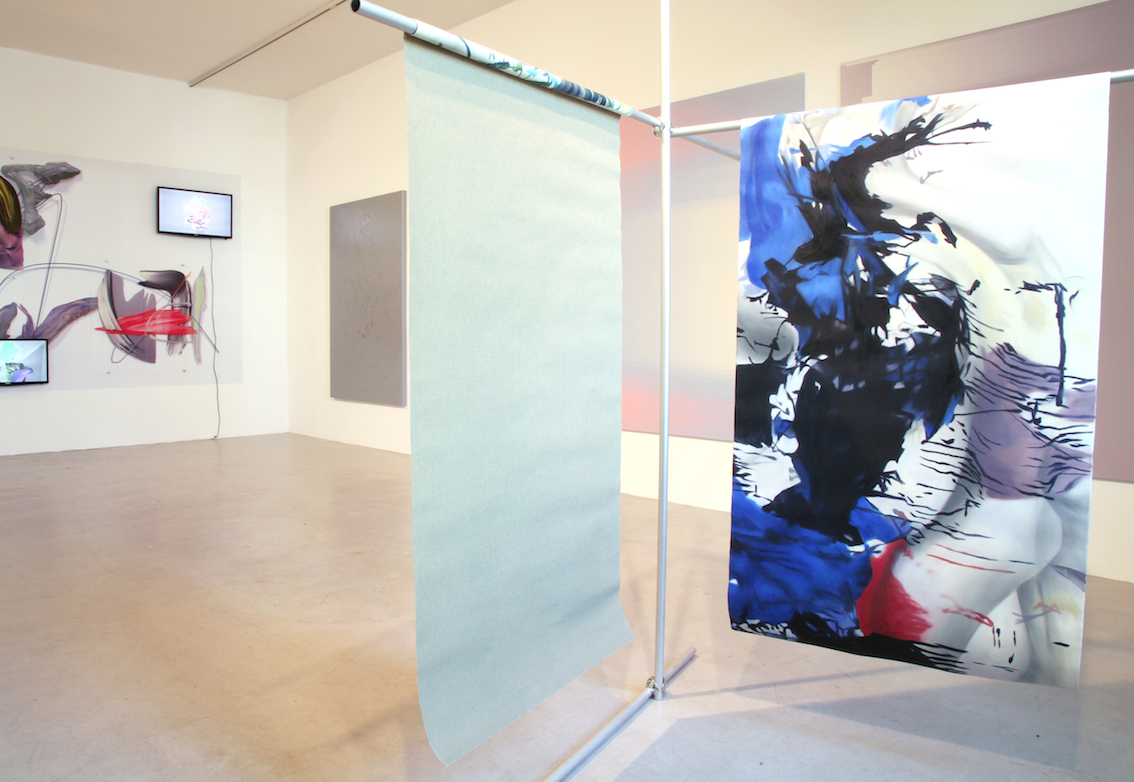
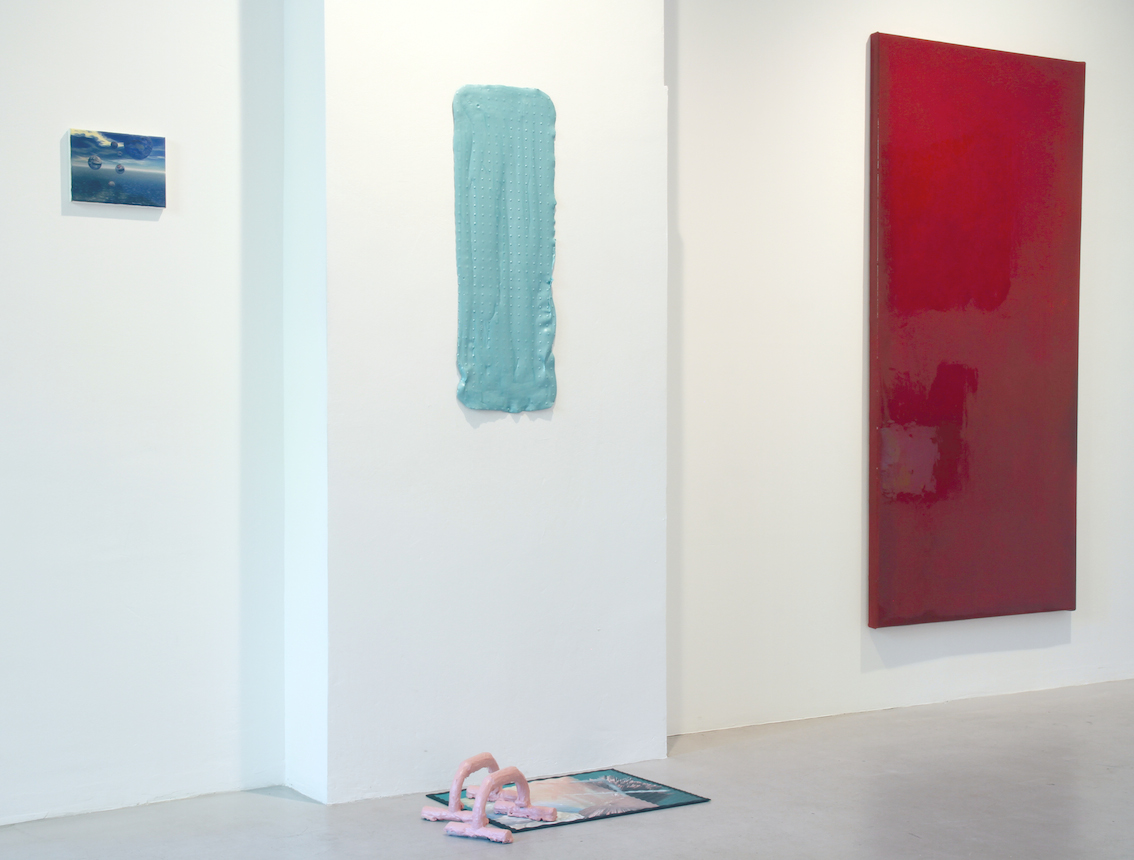
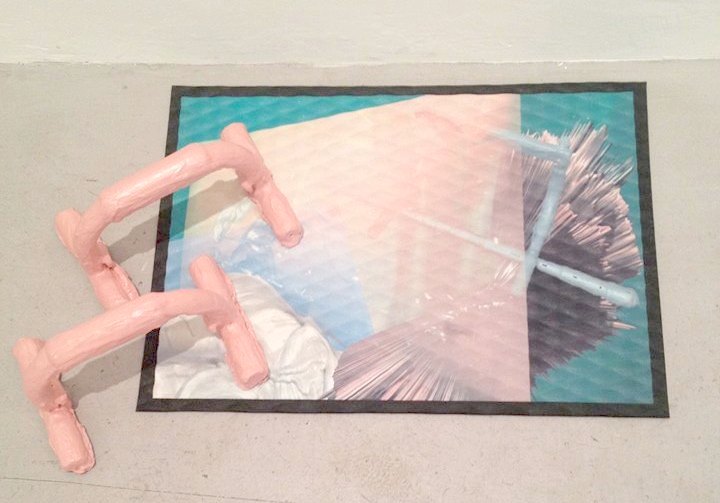
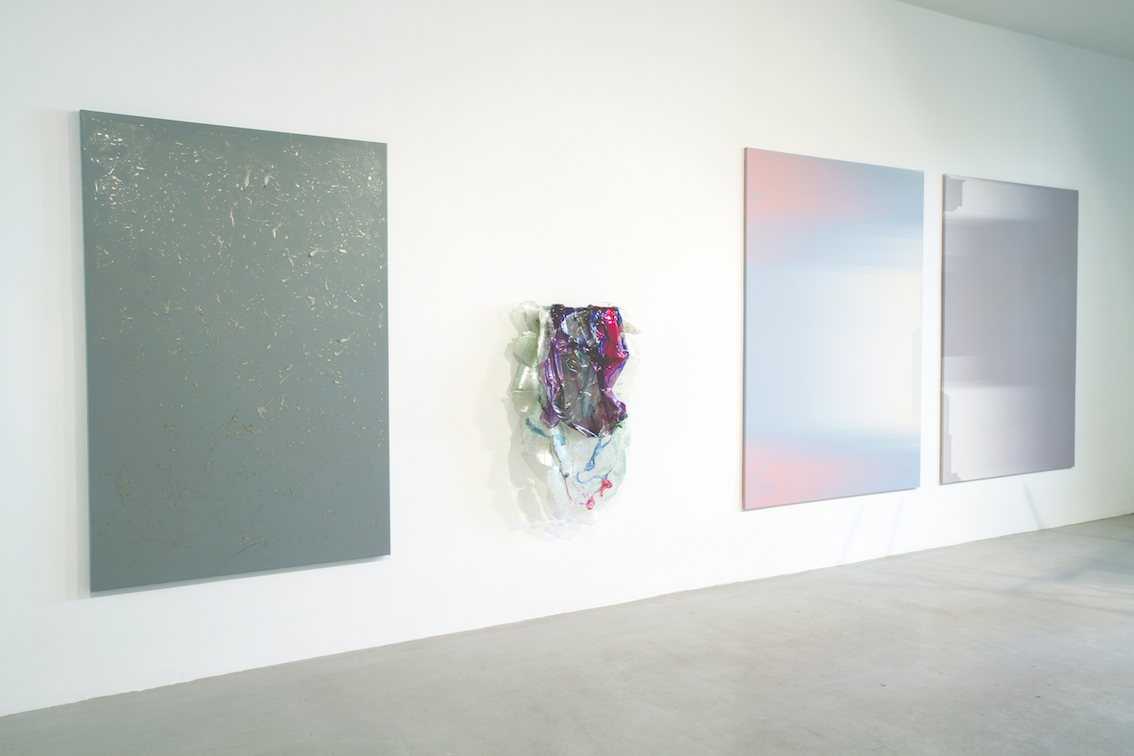
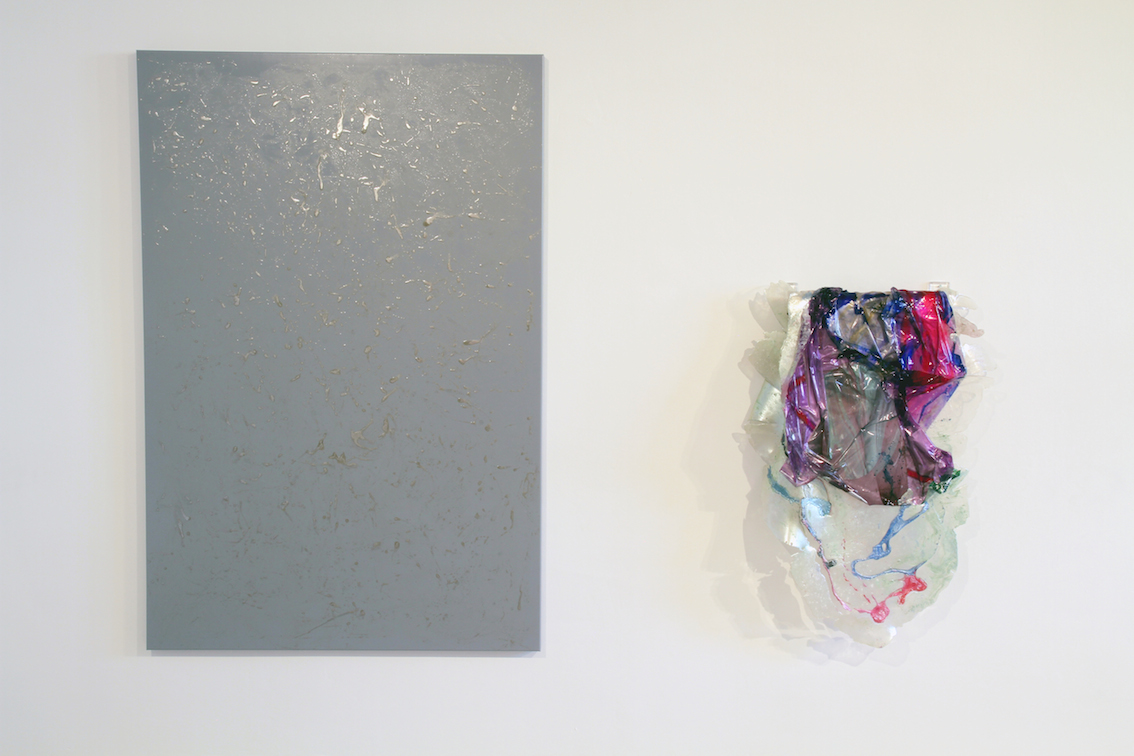
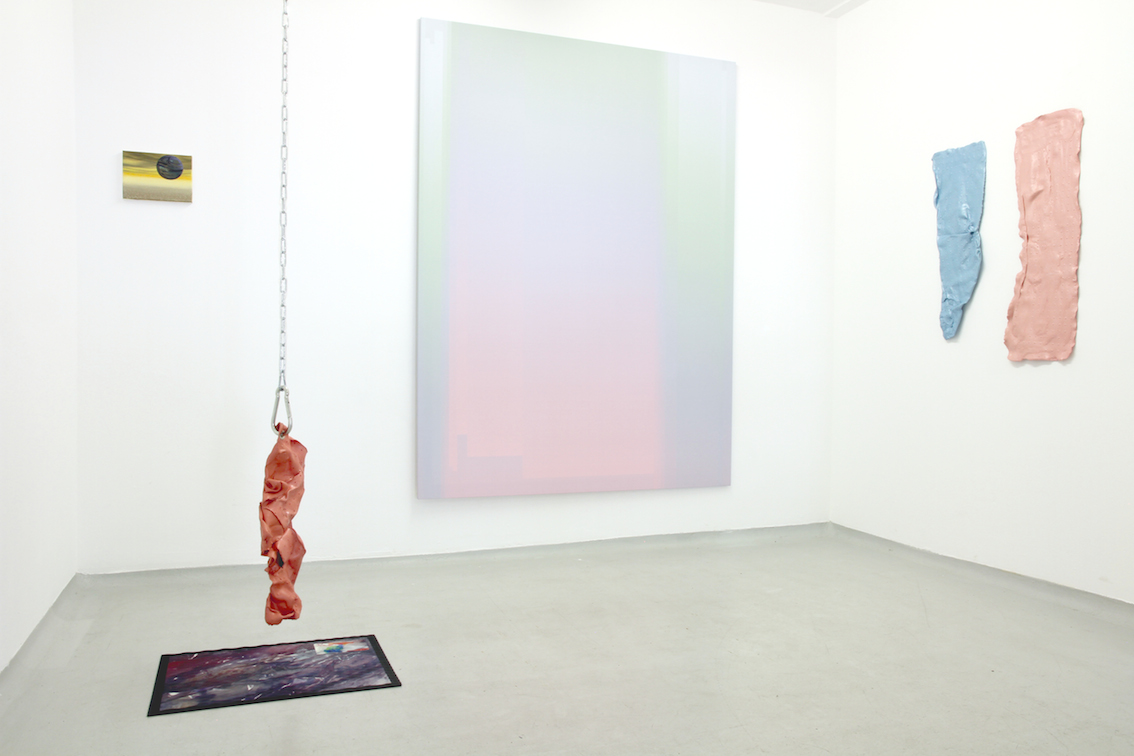
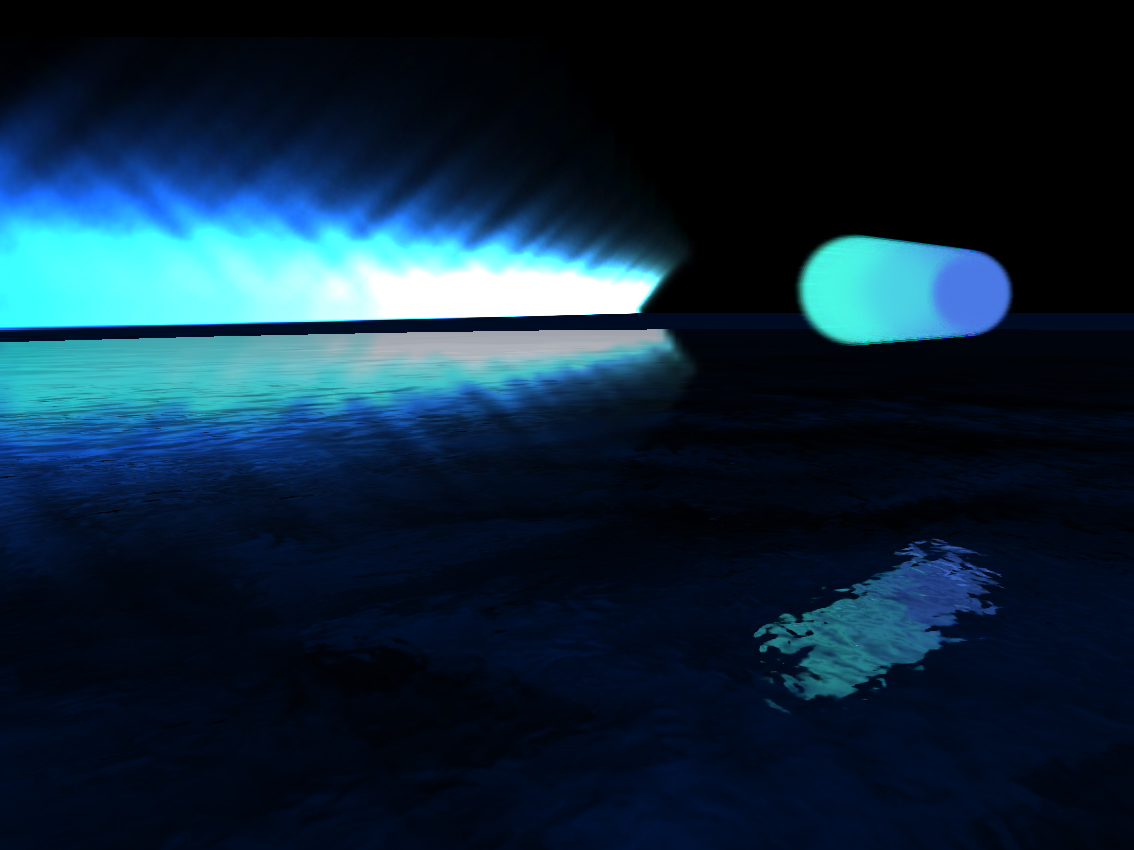
THE OPENING (all images by Stephanie Wächter)
